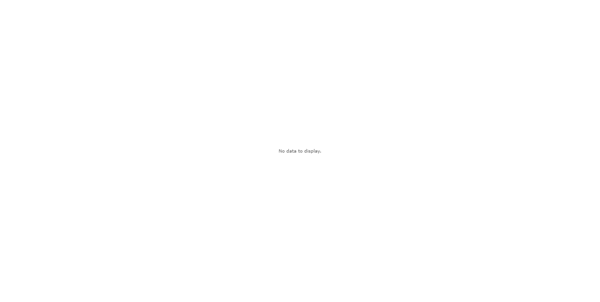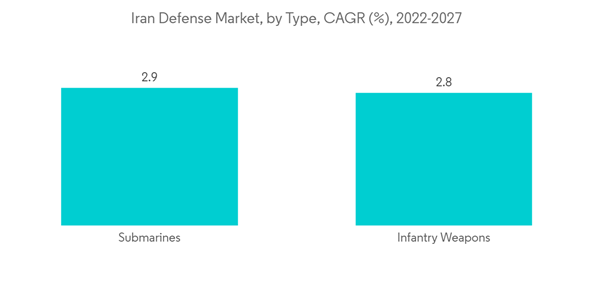Iran defense market has witnessed a significant thump during the COVID-19 pandemic. Country's defense expenditure was in a downtrend over from 2018 but in 2020 a sudden cut was registered in comparison to 2018. Due to reduced military expenses, the market has witnessed a notable impact on the value bar. Although, the COVID-19 restrictions have winded down and the country is like to regain its growth trajectory by the end of 2023.
Iran, officially known as the Islamic Republic of Iran, has been a prime opposition to the United States' presence in the Middle East and the latter's support to Israel. In an attempt to strengthen its deterrence against foreign attack and influence, the country has committed to becoming the dominant power in the turbulent and strategic Middle East region by adapting its military capabilities and doctrine to account for developments by the US and its allies. To achieve its goals, Iran continues to rely on its unconventional warfare elements and asymmetric capabilities intended to exploit the perceived weaknesses of a superior adversary, such as the US.
Moreover, the recent escalation of hostility between the US and the Iranian forces has led to the US threatening to impose stringent additional sanctions and may affect firms that are engaged in direct trade between the two countries. The reimposition of the sanctions has pushed the Iranian economy into recession, sparking unrest around the country.
Iran Defense Market Trends
Ships Will Remain a Opportunity Pocket in Iran Defense Market
The ships segment is likely to remain the prominent segment in Iran’s defense sector over the coming decades. The Iranian Navy possesses an established submarine fleet, comprising both Russian and Iranian-built vessels. Iran’s government is focused on the development of destroyers and taking multiple steps to robust its fleet. Destroyers are larger in size than the frigates, capable of carrying and generating the power for powerful high-resolution radar and many vertical launch cells in a convenient manner. In addition, these warships can provide theatre-wide air and missile defense for forces such as carrier battle groups.Iran has already built Moudge class destroyers in the 1,500-2,000-ton category, which equates to light frigates by international standards. However, the type has lacked effective air defenses, something which the Iranian Navy is reportedly addressing.
As of 2021, the Iranian Navy is reportedly constructing a 6,000-ton destroyer named Loghman. The Loghman is designed as a trimaran or one having three hulls. It is likely to be equipped with phased array radars and surface-to-air missiles in vertical launchers.
Also, in January 2021, Iran unveiled its largest military vessel, the indigenously made 228m long forward base ship IRIS Makran, which can reportedly carry up to five helicopters. The IRIS Makran was repurposed from an oil tanker to provide logistical support, carry out search and rescue missions, deploy special forces, replenish, and transport supplies, offer medical assistance, and act as a base for fast boats.
Iran is reportedly developing the Mowj class frigates, reportedly designed as a catamaran or a Surface Effect Ship (SES). Surface effect ships combine the features of a catamaran and a hovercraft. Essentially a catamaran hull has a skirt at the front and rear, can use both air cushion and conventional (screw or waterjet) propulsion, and some of these ships have hydrofoils that allow for high performance and makes a stable firing platform.
Such developments are likely to fuel growth curve of the ship segment over the forecast period.
Missile Systems Segment to Witness the Highest Growth
Iran's missile program is an integral component of its armed forces, and the country considers the program essential to national security. Iran possesses the largest and most diverse missile arsenal in the Middle East, with thousands of ballistic and cruise missiles, some capable of striking as far as Israel and southeast Europe. For the past decade, Iran has invested significantly to improve these weapons’ precision and lethality. Such developments have made Iran’s missile forces a potent tool for Iranian power projection and a credible threat to the US and its allied forces deployed in the region. In contrast to this, In Sep 2022, during a military exercise, Iran tested a homegrown Fath 360 surface-to-surface missile. The missile is a scaled-down version of the Fateh ballistic missile being created to destroy short-range air defense systems more effectively. The Islamic Revolutionary Guard Corps Aerospace Forces could focus on longer-range strikes.In Sep 2022, During a military parade honoring the Iran-Iraq War, Iran displayed a new medium-range ballistic missile with an operational range of 1,400 kilometers. Such developments are anticipated to drive the missile systems segment of the market into focus during the forecast period.
Iran Defense Market Competitor Analysis
The Iran Defense market is moderately consolidated with some major players in the market including BAE systems, Dassault Aviation, General Dynamcis, Thales Group and Lockheed Martin. Since these companie have global footprint and robust supply chain which aids them to intact their market share in the market. Morover, copanies are focused towards the product development and integrating new generation technologies to encompass market shares.Additional benefits of purchasing the report:
- The market estimate (ME) sheet in Excel format
- 3 months of analyst support
This product will be delivered within 2 business days.
Table of Contents
Companies Mentioned (Partial List)
A selection of companies mentioned in this report includes, but is not limited to:
- BAE Systems
- The Boeing Company
- Dassault Aviation
- General Dynamics
- Iran Electronics Industries
- Lockheed Martin
- Northrop Grumman
- Raytheon Corporation
- SAAB AB
- Thales Group










